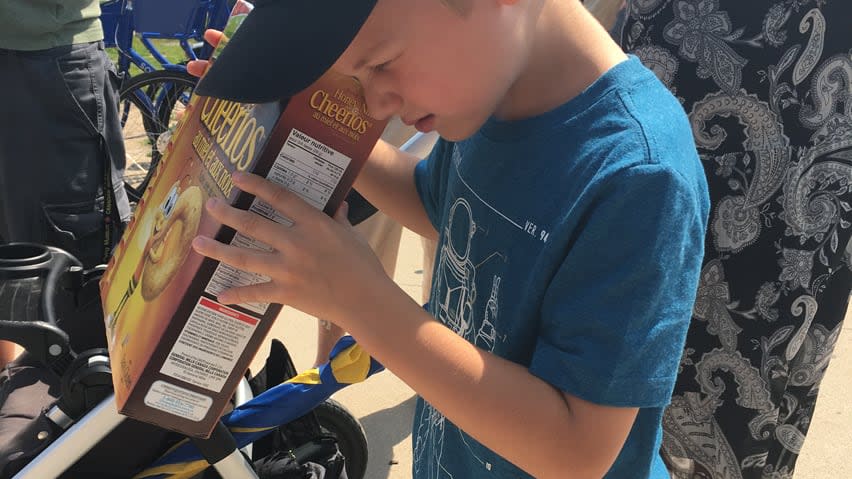UPEI lab tech offers tips on safely watching this year's total solar eclipse across P.E.I.

If you have plans to be indoors for the afternoon of April 8 this year, you might want to cancel them — if you want to catch a celestial event that won't happen again over Prince Edward Island until 2079.
That Monday, a total solar eclipse will occur in the skies over the western part of the province, the first that will be visible from the Island in 52 years.
But if you do plan to put off any inside business and look up to the skies, it's important to plan ahead to view the eclipse with equipment that's safe.
Megan Glover, a lab technician at UPEI, advises using eclipse-viewing glasses — never regular sunglasses — that come from a trusted seller to make sure you're not putting your eyes at risk of damage.

Eclipse-viewing glasses may be in short supply this year as the April event draws closer. There are steps Islanders can take to make sure they're not getting scammed by fake sellers, says UPEI lab technician Megan Glover. (Mic Smith/Associated Press)
"The sun is dangerous to look at any day, not just eclipse day, because it is so intense. So you need to protect your eyes with special equipment," Glover told Mainstreet P.E.I. host Matt Rainnie.
"There is an ISO certification for eclipse glasses. The trouble is… some vendors were making fake glasses and faking the stamp of that ISO on it, so it became a challenge for people to know, looking at them, if that purchase was safe.
"Do a little bit of due diligence… if you're buying to make sure you know what vendor it's coming from."
Totality is rare
A solar eclipse occurs when the moon moves in front of the sun and blocks the view of it from Earth, either partially or totally, depending on where in the world it's viewed from.
Partial eclipses are relatively common — one was visible in parts of Canada back in October 2023 — but totality is more rare, especially in Atlantic Canada.

You will be closer to totality the further northwest you travel on Prince Edward Island on April 8. (CBC)
If the skies are clear, the total eclipse in April will be best viewed the further northwest you travel on the Island. Glover said Summerside residents will see about a minute of total darkness, while viewers from O'Leary and west could get three to four minutes of totality.
The eclipse will travel very quickly from west to east, with the moon starting to block the sun's light in O'Leary just before 3:27 p.m. AT and in Souris only about two and a half minutes later. Totality will spread across western P.E.I. shortly after 4:30 p.m.
While the eclipse will be only partial east of Summerside, the sun will still be 98 to 99 per cent blocked, Glover said.
For her part, she'll be taking in the event from West Prince.
"Globally, total eclipses happen around the Earth all the time. But for people who live on the Island, such as myself, I've never seen a total eclipse before," she said. "I don't want to just stay for the partial eclipse when a total is potentially a few hours' drive away."
Glasses could be hard to find
As for the eclipse glasses that allow you to look directly at the sun, Glover said both the prices and the scarcity of those will go up as April 8 draws closer.

If you can't find viewing glasses to watch the eclipse, a pinhole camera can also protect your eyes from damage from direct sunlight. (Kirthana Sasitharan/CBC)
In the meantime, the American Astronomical Society has posted a list of reputable vendors that sell glasses with the proper ISO certification so that you can make sure you're not getting a fake.
Failing that, you can safely watch the eclipse indirectly by buying or making a pinhole camera, which passes a sliver of sunlight through a tiny hole and projects it onto a surface to view safely.
If you want to get really scientific with your viewing experience, NASA's Jet Propulsion Laboratory has step-by-step instructions for making a pinhole camera.
A pinhead mirror is a similar device, if you happen to have a disco ball lying around.


